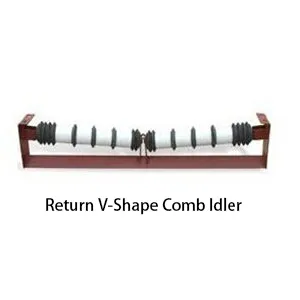 Afrikaans
Afrikaans  Albanian
Albanian  Amharic
Amharic  Arabic
Arabic  Armenian
Armenian  Azerbaijani
Azerbaijani  Basque
Basque  Belarusian
Belarusian  Bengali
Bengali  Bosnian
Bosnian  Bulgarian
Bulgarian  Catalan
Catalan  Cebuano
Cebuano  Corsican
Corsican  Croatian
Croatian  Czech
Czech  Danish
Danish  Dutch
Dutch  English
English  Esperanto
Esperanto  Estonian
Estonian  Finnish
Finnish  French
French  Frisian
Frisian  Galician
Galician  Georgian
Georgian  German
German  Greek
Greek  Gujarati
Gujarati  Haitian Creole
Haitian Creole  hausa
hausa  hawaiian
hawaiian  Hebrew
Hebrew  Hindi
Hindi  Miao
Miao  Hungarian
Hungarian  Icelandic
Icelandic  igbo
igbo  Indonesian
Indonesian  irish
irish  Italian
Italian  Japanese
Japanese  Javanese
Javanese  Kannada
Kannada  kazakh
kazakh  Khmer
Khmer  Rwandese
Rwandese  Korean
Korean  Kurdish
Kurdish  Kyrgyz
Kyrgyz  Lao
Lao  Latin
Latin  Latvian
Latvian  Lithuanian
Lithuanian  Luxembourgish
Luxembourgish  Macedonian
Macedonian  Malgashi
Malgashi  Malay
Malay  Malayalam
Malayalam  Maltese
Maltese  Maori
Maori  Marathi
Marathi  Mongolian
Mongolian  Myanmar
Myanmar  Nepali
Nepali  Norwegian
Norwegian  Norwegian
Norwegian  Occitan
Occitan  Pashto
Pashto  Persian
Persian  Polish
Polish  Portuguese
Portuguese  Punjabi
Punjabi  Romanian
Romanian  Russian
Russian  Samoan
Samoan  Scottish Gaelic
Scottish Gaelic  Serbian
Serbian  Sesotho
Sesotho  Shona
Shona  Sindhi
Sindhi  Sinhala
Sinhala  Slovak
Slovak  Slovenian
Slovenian  Somali
Somali  Spanish
Spanish  Sundanese
Sundanese  Swahili
Swahili  Swedish
Swedish  Tagalog
Tagalog  Tajik
Tajik  Tamil
Tamil  Tatar
Tatar  Telugu
Telugu  Thai
Thai  Turkish
Turkish  Turkmen
Turkmen  Ukrainian
Ukrainian  Urdu
Urdu  Uighur
Uighur  Uzbek
Uzbek  Vietnamese
Vietnamese  Welsh
Welsh  Bantu
Bantu  Yiddish
Yiddish  Yoruba
Yoruba  Zulu
Zulu Conveyor Roller Support Structures for Efficient Material Handling Systems
Conveyor Idler Frames Essential Components for Efficient Material Handling
Conveyor idler frames are a critical component of bulk material handling systems. They are designed to support the conveyor belt and facilitate the smooth transportation of various materials, from coal and minerals to grains and aggregates. Understanding the role and importance of idler frames can provide valuable insights into enhancing the efficiency and reliability of conveyor systems.
The Role of Idler Frames
At their core, conveyor idler frames are engineered structures that house idler rollers. These rollers are responsible for supporting the conveyor belt as it moves materials across different distances. The structure of the idler frame is crucial, as it directly influences the performance of the conveyor system. Properly designed idler frames ensure that the belt maintains the correct sag, reducing stress and wear on both the belt and the rollers.
Design Considerations
The design of conveyor idler frames involves several critical factors. First and foremost is the loading capacity, as idler frames must withstand the weight of the conveyed material while ensuring stable operation. Manufacturers typically calculate load requirements based on the type of material being moved, belt speed, and distance of transportation.
Material selection for idler frames also plays a significant role. Common materials include steel, which offers high strength and durability, and various alloys that enhance corrosion resistance. The choice of material ultimately affects the longevity and maintenance needs of the frames, impacting operational costs.
Types of Idler Frames
There are several types of idler frames designed for different conveyor configurations. The most common types include
1. Trough Idler Frames These are typically V-shaped and support the belt on the edges, allowing for efficient load containment. They are particularly useful in applications where bulk materials must be transported over long distances.
conveyor idler frames

2. Return Idler Frames These frames support the conveyor belt on its return path, ensuring that the belt maintains proper alignment and minimizing wear on the underside.
3. Impact Idler Frames Designed to absorb shock from heavy loads when materials are dropped onto the belt, these frames are crucial in applications involving loading points. They mitigate the risk of damage to both the belt and the idler system.
Installation and Maintenance
Proper installation and regular maintenance of conveyor idler frames are vital for optimal performance. During installation, precise alignment of the frames is essential to prevent belt misalignment, which can lead to increased wear and operational downtime.
Routine maintenance includes inspecting the frames for signs of wear, corrosion, or misalignment. Regular checks of the idler rollers are also critical, as damaged or worn rollers can lead to increased friction, energy inefficiencies, and potential belt failure.
Future Innovations
As industries continue to evolve, so do conveyor systems and their components. Innovations in materials and design, such as the use of lightweight composites and advanced lubrication systems, are enhancing the performance of idler frames. Additionally, smart technologies are being integrated into conveyor systems, allowing for real-time monitoring and predictive maintenance, reducing unplanned downtimes.
Conclusion
In conclusion, conveyor idler frames play an indispensable role in the efficiency and reliability of bulk material handling systems. Their design, installation, and maintenance are crucial to ensure optimal performance and longevity of conveyor systems. As industries advance, staying informed about the latest innovations in idler frame technology will be essential for companies aiming to improve their operational efficiency and reduce costs in an increasingly competitive market.
-
Revolutionizing Conveyor Reliability with Advanced Rubber Lagging PulleysNewsJul.22,2025
-
Powering Precision and Durability with Expert Manufacturers of Conveyor ComponentsNewsJul.22,2025
-
Optimizing Conveyor Systems with Advanced Conveyor AccessoriesNewsJul.22,2025
-
Maximize Conveyor Efficiency with Quality Conveyor Idler PulleysNewsJul.22,2025
-
Future-Proof Your Conveyor System with High-Performance Polyurethane RollerNewsJul.22,2025
-
Driving Efficiency Forward with Quality Idlers and RollersNewsJul.22,2025





























